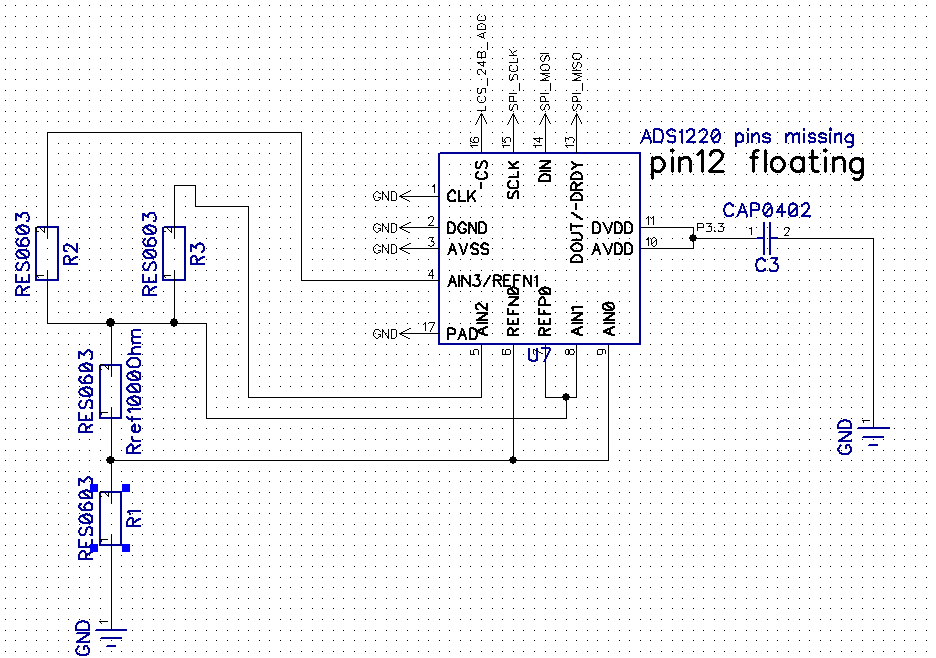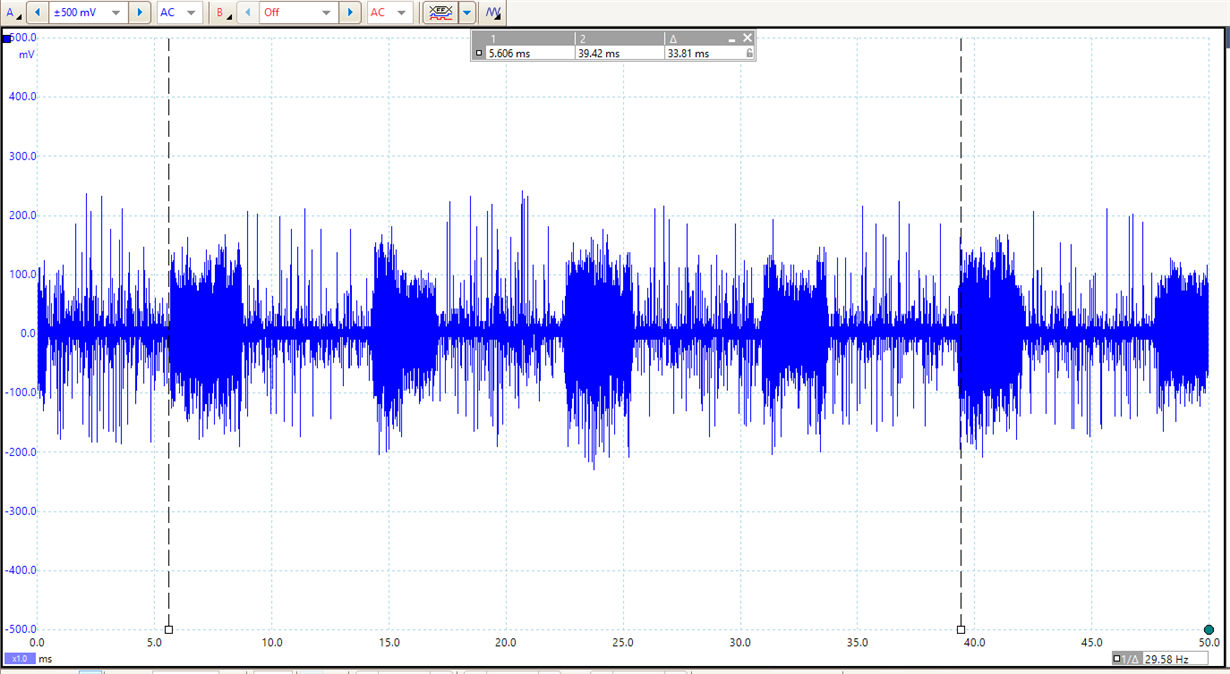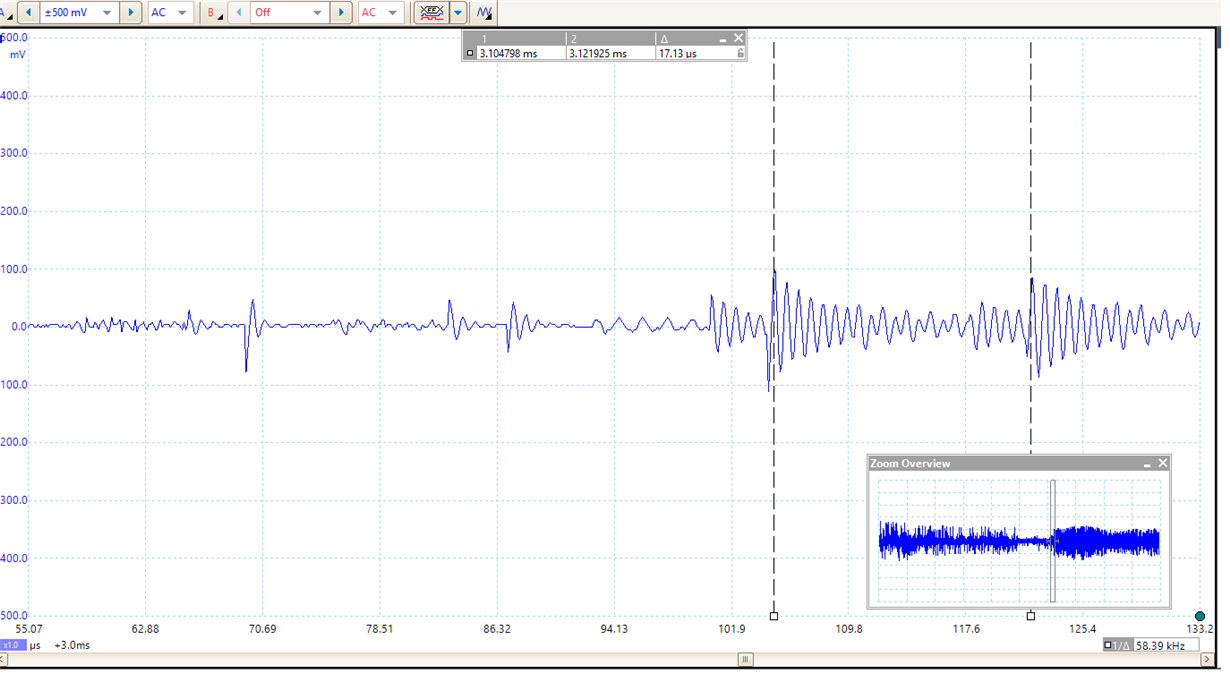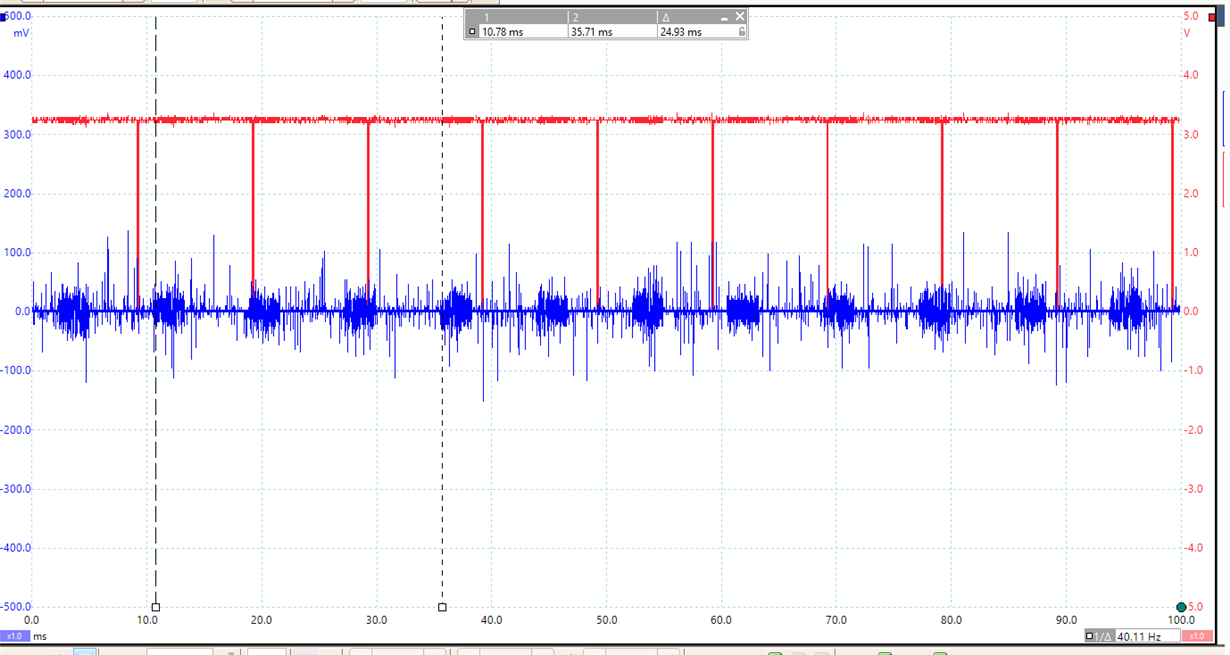We use the DAC1 current (1.5mA) to create a voltage drop over two resistors that we want to measure and a reference resistor. The DAC1 current affects properties of our device, but that is not a problem if it is constant/stable. It is not.
Our resistor chain is Input - R1 - REF - R2 - GND and Input - R3 - REF - R2 -GND. We are measuring R1, R2, R3 and internal thermistor. After 10ms we switch to the next measurement. One conversion takes about 6ms (so total cycle time is 40ms). In the first interval we input the DAC1 current in R1; for all other cycles we input in R3. Measurement is set to be continuous.
The expected behavior is that the current in the R2 resistor is constant (with 2 short periods of switching input from R1 to R3 and back). We see that it is not and after each conversion there is noise on the voltage over R2. The noise has a repetition rate of about 60kHz (looks like an excitation) and then a ringing at 1.2MHz.
Why would the DAC1 current not be constant from conversion to conversion (as indicated, we set measurement to be continuous)? After the first conversion (6ms), the 2nd conversion will not be completed, but that should not impact the DAC1 current.
Any thoughts on why the DAC1 current would show an excitation/ringing behavior?
Thank you,





